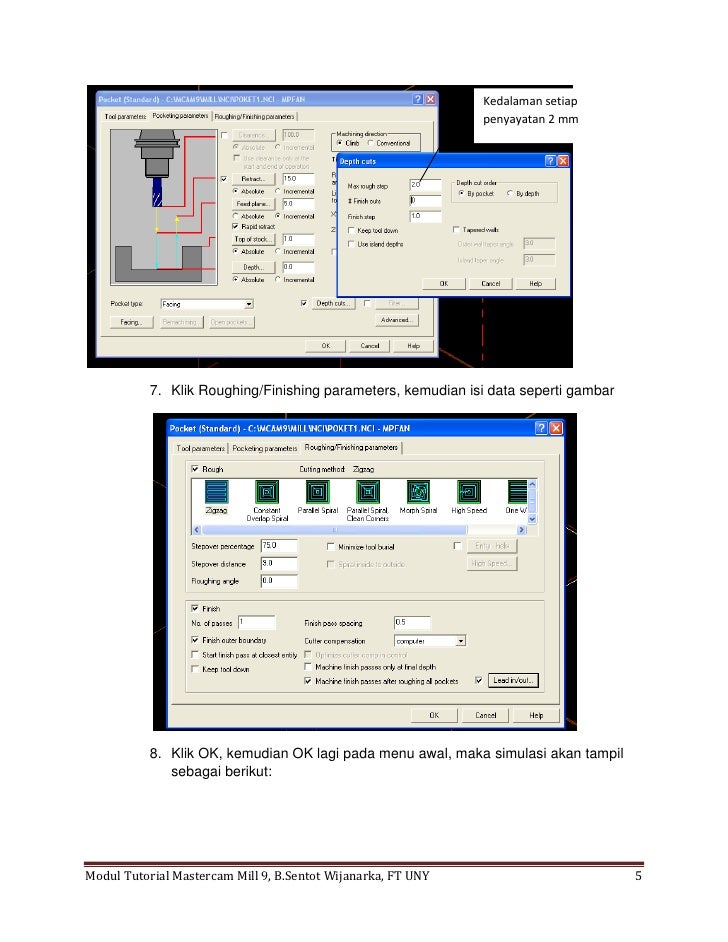
Mastercam 2019 aircut full#
To handle this challenge, ProfitTurning™ employs full trochoidal cutting inside these small areas until the tool reaches the “minimum trochoidal radius” as defined by the user. The minimum trochidal radius is deter- mined by users to limit the size of trochoidal moves in small corners where a cutting tool cannot easily fit.Īnother challenge in these difficult to reach areas is to keep constant tool engagement, so that the roll-in arc radius is not too large. These areas are often defined by part profiles, roll-in/out arcs, and the minimum trochoidal radius. Fortunately, ProfitTurning™ provides cutting strategies for all small and uneven areas. Not all cutting areas are as smooth and easy to reach, such as the one featured in Figure 3. The feed rate is also maximized during these straight line movements called - parallel moves - maintaining constant engagement, and then reducing engagement when exiting the cut. With smooth roll-in movements and a smaller feed rate, the cutting force at tool entry can be significantly reduced and maintained at a constant level. ProfitTurning™ breaks the cutting surface into manageable pieces, and uses round inserts to roll in and out of the cut to control the engagement at both tool entry and exit. This is achieved using a toolpath algorithm based on an engagement control strategy, which allows for consistent cutting forces universally, and achieves the highest level of productivity.Įngagement control: Make reduced and constant engagements throughout the entire passĪnother way to eliminate negative effects in traditional plunging is to maintain reduced and consistent tool engagement. ProfitTurning™ is a productive and secure cutting method that enables manufacturers to make more efficient cuts with consistent chip loads and cutting forces, thereby reducing tool wear and decreasing cycle time.

ProfitTurning™ is a high-speed cutting method added as an additional cutting strategy in ESPRIT’s existing Roughing and Grooving cycles. Therefore, maintaining a constant chip load is crucial in the manufacturing process.ĮSPRIT features a new and innovative lathe roughing strategy, ProfitTurning™ which helps eliminate the adverse effects of traditional turning methods. Another adverse out- come of a low chip load is a rubbing effect, which prevents the machine from making clean chips, and will also heat up both the tool and the material, drastically reducing tool life. For example, if a tool is cutting deep down in a slot the chips will have a hard time getting out of the way quick enough, which may cause the tool to break. These unwanted outcomes may include chips so large that they cannot get out of the cutter's way fast enough.



In particular, if a chip load is too low or too high, that may cause the tool to wear faster causing many unwanted outcomes. A key factor when high-speed machining these hard materials is maintaining a constant chip load, which remains vital when machining quality parts and prolonging tool life. Employing traditional plunge methods on such workpieces may also result in uneven rest materials with irregular surfaces.įurthermore, Traditional Turning methods can cause adverse effects during the cutting process, such as heavy tool load, high and irregular cutting forces, vibration and poor chip control1. When using traditional turning methods on heat-resistant and hard materials such as super alloys large engagement angles and inconsistent chip load can occur at both tool entry and exit.


 0 kommentar(er)
0 kommentar(er)
